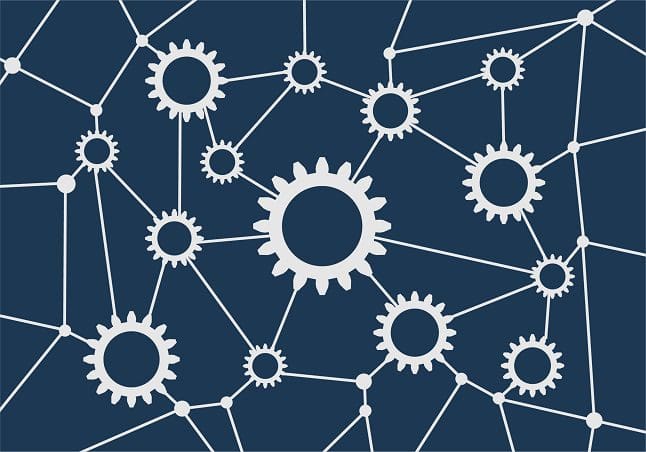For the past few years, graph databases have been pushed by vendors and pundits as a better way to scale database access and manage data. Enterprise IT was initially slow to move to graph databases, but now momentum is picking up.
MarketsandMarkets research predicts that graph database software sales will grow from $1.9 billion in 2021 to $5.1 billion by 2026. Emergen research projects that by 2030, the global graph database software market will be at $11.25 billion.
Graph databases began as a concept in the 1960s, when limitations in hierarchical databases like IBM’s IMS were circumvented with the help of what was then known as virtual records. However, it wasn’t until the 2010s that graph databases began to be noticed by companies.
Indeed, graph databases can surpass the performance of relational databases like SQL when it comes to processing large troves of data from disparate sources and systems.
Current use cases seem to confirm this.
In the financial sector, a graph database supports complex analytics by connecting many different data points that give companies insights into how, when, and where fraudulent activity begins to emerge. With the help of graph databases, companies can also see links between fraudulent activity and credit cards, addresses and transactions. Being able to detect and intercept fraud before it manifests is huge. In 2021, US consumers lost over $5.8 billion dollars to fraud.
In aerospace, Lockheed Martin Space is using graph databases to manage its large supply chain. “Think about the lifecycle of how a product is created,” said Tobin Thomas, CDAO at Lockheed Martin Space, in a Business of Data report. “[We’re] using technologies like graphs to connect the relationships together, so we can see the lifecycle based on particular parts or components and the relationships between every element.”
In healthcare, graph databases can connect a diversity of data points to observe how patients move from providers to specialists throughout the healthcare systems, and to better understand rates of disease occurrence and causative factors.
In a word, any organization faced with analyzing a large spectrum of data points, with many of them seemingly unrelated, will benefit from using a graph database.
What Is a Graph Database?
A graph database is so named because it follows the point-to-point structure of a graph. The database store items in a data store that are linked to a collection of nodes and edges, with the edges representing the relationships between the nodes. These nodal relationships allow data in the store to be linked together directly and, in many cases, retrieved with one operation.
Graph databases use NoSQL, which is a boon to IT, which usually has staff with SQL skills—and the power of a graph database to discover and link thousands of different data relationships for analytics and insights makes it an ideal fit for analysis of Web, social media, and unstructured data. The point to point, non-columnar structure of a graph database makes it faster and more agile than its relational SQL database counterpart.
Getting Started With Graph Databases
Despite rosy market forecasts, only 12.7% of company respondents in a 2019 DATAVERSITY survey said they were using graph databases, and only one quarter of survey respondents said they were planning to use graph databases in the future.
One barrier to use has been understanding.
IT has well-honed skills in relational databases and understands the place of relational databases in the overall database landscape, but there is still fuzziness about how graph databases differ from relational databases and how graph databases can be used for advantage.
Given these gaps in knowledge and experience, what can IT do now to ensure that it doesn’t miss out on what could become a powerful analytics platform? Here are some ideas:
1. Find a use case
In criminal forensics, where it is important to connect many different data points (some of them seeming unrelated) to create a picture of a suspect, graph databases are useful. The same goes for a medical application that seeks to understand the origin of an illness, and why it affects some people but not others.
In both cases, large amounts of data need to be analyzed. This is where graph databases shine, and where relational databases have their limits.
2. Start with one project
The first business use case should be tightly defined and projectized. This gives your staff a chance to learn and to experiment with graph database technology. It also enables staff to define a methodology for working with graph databases. The DBA can begin thinking about how graph databases should fit in overall data architecture.
3. Look for a strategic vendor or consultant partner
Graph database expertise is available..[…] Read more »…..


ROLE DESCRIPTION
We are looking for a Membership Manager to join the company and take on one of the most opportunistic roles the industry has to offer. This is a role that allows for you to create and develop relationships with leading solution providers in the enterprise technology space. Through extensive research and conversation you will learn the goals and priorities of IT & IT Security Executives and collaborate with companies that have the solutions they are looking for. This role requires professionalism, drive, desire to learn, enthusiasm, energy and positivity.
Role Requirements:
Role Responsibilities:
Apex offers our team:
Entry level salary with competitive Commission & Bonus opportunities
Apex offers the ability to make a strong impact on our products and growing portfolio.
Three months of hands on training and commitment to teach you the industry and develop invaluable sales and relationship skills.
Opportunity to grow into leadership role and build a team
Extra vacation day for your birthday when it falls on a weekday
All major American holidays off
10 paid vacation days after training period
5 paid sick days
Apply Now >>